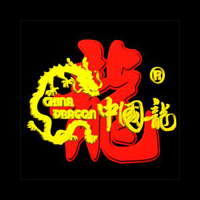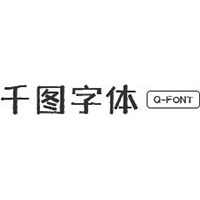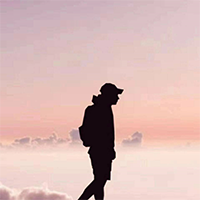ScreenFonts: Frankenweenie, The Paperboy, Argo, Seven Psychopaths

I really enjoyed interviewing Dustin Stanton for last month's instalment of ScreenFonts and learning more about the creation process of his film posters for The Master. If I am not mistaken it had been since my micro-interview with Akiko Stehrenberger who art directed and designed the painted poster for Life During Wartime that I did something similar. So you can imagine I was very excited to discover Seven Psychopaths offered material for six of these in this episode. While (larger) design agencies are typically quite hard to approach, individual designers usually are far more open for a chat. As much as they love to create, they also don't mind sharing their inspiration and techniques. I sincerely appreciate this attitude of sharing and community, as it helps gain us insight and grow in our own work. So a big thank you to all six of the designers who contributed, plus the two designers interviewed in the second half.
Indeed, you read it right. This edition of ScreenFonts eventually grew so big I had to split it in two halves, meaning you get two posts this month. I don' know about you, but this has me very excited. I hope you enjoy October's double-dipping dose of movie poster goodness.
Halloween: Scary Type posts.
This sketch by Tim Burton himself is just too stinking cute. It strikes the perfect middle-ground between scary and lovely. One of the things I told my children to take away from our visit to the Tim Burton exhibition in Paris was that you don't have to be a virtuoso artist to make great drawings.
Inspired by the film's nostalgic aesthetic, the joyful and wonderfully tongue-in-cheek character posters ape vintage B-movie one-sheets in the typical Lon Chaney style from the 1920s, complete with weathering and folding creases. The typefaces in these designs range from out-of-the-box monster fonts like Haunted House from House Industries' Monster Fonts collection for Sparky's Return, to doctored ITC Machine and faux Asian for Day of The Turtle.

The poster for Fat Kid Rules The World transports the anxiety of high school rejects to the canvas using high-contrast photography, hand-drawn type, and expletive-like dingbats on crumpled paper. The three-dimensional capitals combined with hand-printed letters look rather dodgy, but that's the whole point because the lettering is supposed to look like a teenager's scribbling. Personally I would have gone for something like FF Bokka or Blockhead.
As much as I am a kid of the nineties when it comes to graphic design and typography, I still have a great fondness for high-concept 70s advertising from my early youth. The movie poster for V/H/S is a nice contemporary example of this. In a wall of anonymous VHS tapes the copies with white stickers form a stylised death head. Simple and effective. Helvetica is an appropriate choice, given the visual reference to the 70s and 80s, and the fact that back in the days the small type on stickers of almost all audio and video tape brands was set in Helvetica.
The Paperboy is a perfect example of how image quality and typography can reinforce the period setting defined by the image in a movie poster. The car as well as the clothes and hairstyle reveal the film is set in the late sixties. The image quality is reminiscent of the typical discolouration that occurs over time in colour photographs from that period. Bringing it all home is the use of the highly recognisable Neil Bold. This award-winning display face, designed by Wayne Stettler in 1966, was an instant celebrity upon its release. This makes its use in this poster historically accurate.

Neil Bold became synonymous with magnified modernism for a whole generation. It was a jazz record packaging favourite, especially at Blue Note Records, and made regular appearances on science fiction book covers during the last stretch of the genre's golden age. Besides the "official" digitisation published by Canada Type, Sudtipos also released its own version. Mobley is based on the characters found on a 1960s Blue Note Records jazz album sleeve. Alejandro Paul added a serif variant, and condensed versions for both. True to its original source of inspiration, this contemporary interpretation creates its own unique typographic image through the presence of odd counters, generous curves and sharp corners. The family embodies the independent creative spirit of that era, yet features several modern design traits.
Recent horror / gore movie equals Trajan? Not always. Perpetua – one of the many alternatives FontShop suggests in its dedicated FontList – exudes an equally classic and dignified atmosphere in the movie poster for Sinister. This shouldn't come as too much of a surprise: its creator, the British typeface designer and printmaker Eric Gill, was also a sculptor and stonecutter. As the design of Carol Twombly's Trajan is based on lettering cut into the base of the Trajan Column in Rome, and Eric Gill's type design is informed by his own letter cutting, the two alphabets have similar backgrounds.
Argo has an arresting poster that sketches the theme of the film with a great economy of means. The blue monochrome portrait of Ben Afleck exudes the proper amount of anxiety, and framing the escape scene in a contrasting red film strip gives two more clues for what the movie is about.

The final bit of information comes from the skyline of the Iranian capital that is cut out at the bottom of the knocked-out movie title. For maximum effect the title is set in the simple letter forms of Akzidenz-Grotesk Bold Extended Italic (see also Basic Commercial and Standard). I understand the reflex of going back to classic type designs. Their familiarity makes them inconspicuous, and any customisation becomes instantly noticeable. However I am convinced a contemporary neutral sans serif would have worked just as well. Regardless this is a very strong and beautiful mainstream poster.
Adding numbers underneath the actors makes the "confused actors syndrome" as the viewer can easily connect the names of the actors with their picture. Just follow the numbers, stupid. ; )

The movie title uses the same technique as the previous poster. Silhouettes incorporated in Helvetica's "default" character shapes hint at the storyline – the number 7 in the V, Tom Waits' rabbit in the counter of the P, a ski mask in the O and the dog in the counter of the A.
Apart from the regular posters, six artists were commissioned to create character posters, one for each of the titular "psychopaths". Unlike the customary film collaterals who usually adhere to some sort of branding guidelines of the movie, this resulted in a series of very diverse designs, each in the artist's signature style. I contacted each one of them, asking what aspect of the movie or character inspired them to create their design, and if they could share a little bit about the creation process and which technique(s) they used.
Justin Erickson of Phantom City Creative portrayed Christopher Walken, using Trade Gothic Bold Condensed No. 20 as main typeface. I like how Justin integrated the live dog into the "Lost Dog" poster, which is then duplicated and used as a wallpaper-like backdrop for the image.
After watching the trailers for the film I was immediately struck by how bizarre Christopher Walken's character was, in a way that only Walken could portray it. Since his character Hans is a dog napper and the plot revolves around a dognapping gone awry (don't you hate it when that happens?), I wanted him to be smirking at the audience while poking fun at how ridiculous the concept of making a living by kidnapping dogs is. Plus it was a joy to do a portrait of Walken with a cravat.
My process always starts with pencil and paper to hammer out a concept and rough drawings. I scan in the drawings, clean them up in Photoshop (or redraw them), then once I get approval on a concept the rest of the illustration is created in Photoshop.
Dave Banks of Venom Thunder portrayed Colin Farrell, using ITC Avant Garde Gothic as main typeface.
Colin's character in the movie is really stressed out, constantly being distracted from his writing and a total alcoholic. I just wanted to convey that vibe in the desert. I also wanted to capture his distinct eyebrows and hair, two features I automatically picture when I imagine him speaking in his Irish rogue.
I've always loved the textures and mistakes that show up in the process of screen printing. Lately I've been playing with that type of debris as a means of shading. It's incredibly exciting how it adds a sense of depth to an otherwise flat 2D composition. I saw a perfect opportunity to use it for this project to create a dustier desert atmosphere.
Eric Nyffeler of Doe Eyed portrayed Sam Rockwell, using Futura as main typeface, and cleverly incorporating the number 7 in the movie title.
The turnaround time on this project was very quick, so I didn't have access to the entire film before it was released, which was a bit of a challenge. I was provided with a range of character specific film clips and high-res photographs, both stills from the film and studio/costume shots. I was immediately struck by Sam's ridiculous costume from several scenes: a cheap red vinyl coat, a shirt printed with what appears to be cougars or tigers, a pistol stuck in his pocket, and a fluffy puppy tucked under his arm. Seeing how Seven Psychopaths is kind of a sarcastic twist on the heist film, I thought it would be rad to give Sam's poster a similar twist on absurd-meets-thriller. I approached the illustration as something of a classic, stylized, high contrast Saul Bass-esque movie poster. At first glance, it looks like a tough, gun-packing criminal, but upon further inspection, the absurdity of the outfit and the dog's expression clearly adds a bit of a "WTF?" to the poster.
As with most of my work, I started off this poster by hand sketching all the various elements and scanning them into the computer. I redrew them all in Adobe Illustrator to give them perfect shapes and weight. I then printed off every single element and trashed it up using photocopiers, lacquer thinner, concrete floors, etc etc. All of these distressed elements were then scanned and reassembled in the computer. All in all, it's about using the computer to make a big collage of trashy textures.
Chris Thornley of Raid71 portrayed Woody Harrelson, using the official movie logo.
Cute dog, evil glare from a person who can switch moods in a split second with no empathy for your situation… it was impossible to say no. The studio were really helpful in providing a host of reference material for the project. After a few phone conferences I had a good idea about what I wanted to produce.
I created three roughs playing with the dog/Woody combination. With my design I wanted to show this juxtaposition of love/hate. The blood splatters reveal a side of this character that is hidden just underneath the surface. All the artwork was created directly in Illustrator using a Wacom tablet.
Nathan Goldman & Dan Kuhlken of DKNGStudios portrayed Olga Kurylenko, using FF DIN as main typeface, with a seven merged into the V and a flipped C.
It is quite hard to explain the connection of the poster to the storyline without spoiling the film. Let's say that at some point Olga's character is involved in a murder. Yes, a lot of people get killed in this movie. What makes the scene so special is that it is the first time the audience realizes another character is a serial killer. His trademark after each murder is to place a Jack of diamonds playing card on the body of his victim. Our design was inspired by this exact scene. We decided to design Angela within a playing card. The significance of her image being displayed twice on the card alludes to her love interest with two main characters in the film. We placed a blossomed flower at the center of the design to symbolize an important element from the murder scene.
Obviously one of the biggest parts of this project was the concept development. From there we researched classic playing cards and created custom shapes and patterns to compile a unique design. Every element was created as a vector shape in Adobe Illustrator. We then separated the design out into two colors (green and black to match the branding of the film) and had the poster screen printed as a 24"×36" poster, which is twice as large as our usual 18"×24" posters. If you are a big fan of the film we highly recommend buying a poster from this series as they are all limited editions of 100 and won't last long.
Todd Slater portrayed Tom Waits, using the official movie logo.
I got a phone call from CBS films one morning about the project. They briefed me on the poster series idea and gave me the full list of psychopaths to choose from. Being a fan of Waits I immediately chose him without knowing much about what the project entailed. I didn't get to see the film before making the print; none of the artists in this series did actually. I was given a description of Tom's character along with stills from the film and a short clip to watch. In the movie Waits plays a serial killer who kills other serial killers and meets Farrell and Rockwell by answering an ad in the newspaper. The ad is looking for killers to share their experiences for a movie that Farrell is writing. To me, the oddball mannerisms and tone of Tom's character in the film ring true to who he is in real life. I think that the colors and the grit in the print echo some of Tom's album art.
The first submission I made was an illustrated version of Tom's face made up of tiny rabbits. I only did a small portion of the print to show Tom and his manager some direction where I was heading. They were OK with it but after looking through my portfolio Tom preferred something that stylistically looked more like my Alfred Hitchcock themed print called Seeing Red. Back to the drawing board it was. As I've always liked double exposure prints I decided to work with a series of images layered on top of one another at varying degrees of transparency. These images relate to themes I've seen in serial killer films: a thumbprint and a blood sample along with a white rabbit and Tom's face. I decided to make the blood sample invert from blue to red when it touches Tom's face just to give the portrait a little heat. The placement of the white rabbit is important because I wanted the eye of the rabbit to match up with Tom's eye. The idea behind that is that his character sees the world through two very different eyes. The first is his own: the savage, the murderer, the psychopath. The second is the kinder, gentler eyes of the rabbit. It is my belief that Tom carries the innocent rabbit as a way of disguising who he really is. The print was then screen printed using 6 different inks.
-
 ShanhaiFonts
ShanhaiFonts
Brand:山海字库
Area:China

-
 Cangji Fonts
Cangji Fonts
Brand: 仓迹字库
Area: China

-
 JT Foundry
JT Foundry
Brand: 翰字铸造
Area: Taiwan, China

-
 Handmadefont
Handmadefont
Brand:
Area: Estonia

-
·千图字体
-
 HyFont Studio
HyFont Studio
Brand: 新美字库
Area: China

- ·XUID Arrays: One Less Thing To Worry About
- ·How to Read a Painting by Patrick de Rynck
- ·Ad for Vincebus Eruptum by Blue Cheer
- ·20 Houses. A New Residential Landscape exhibition, Wallpaper* Architects Directory
- ·New York New York, Jazz St. Louis
- ·The Great Comic Book Heroes, by Jules Feiffer
- ·Chinese College Student Invents Smog Font
- ·Food Not Bombs hypothetical redesign
- ·Type terms: the animated typographic cheat sheet
- ·Iconic Transport for London logo undergoes subtle redesign

























